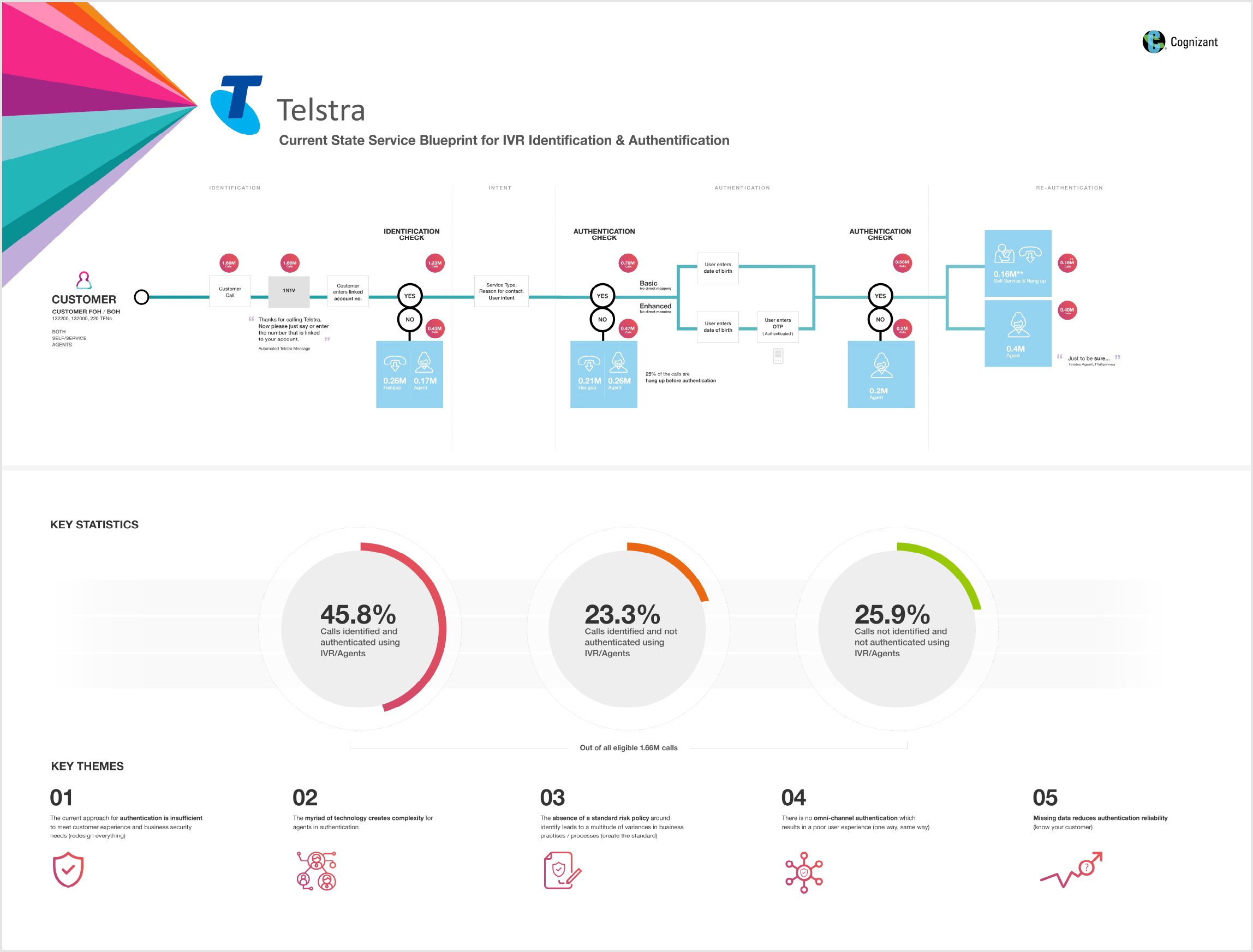Telstra global contact centre
My role // Head up the design function
Activities undertaken // Design strategy, vendor engagement, customer interviews, rapid prototyping, usability testing
Challenge
We were engaged by Telstra to use a Design Thinking approach and solve challenges associated with their authentication.
The telco was facing four major challenges:
Their current authentication approach was insufficient to meet customer experience and business security needs
There was simply no omni-channel authentication
Legacy data and data quality were undermining authentication reliability
Standard risk policy around identity were archaic and absent
Approach
We flew to Manilla and spent an entire week with the call-centre crew to observe how they worked on a daily-basis.
We interviewed 40 Telstra customers and staged a modern authentication experience using voice biometrics.
Through a multitude of technology workshops, ideation workshops with key Telstra stakeholders and customer insights via interviews and observations, we were able to gather valuable insights and metrics.
We uncovered 5 key problem statements and conducted user testing on future state customer experiences that helped drive the solution. We also defined a future architecture and implementation roadmap spread over 12 months.
Outcome
We provided an omni-channel experience blue-print to identify and authenticate customers using biometrics and shared credentials across all channels.
Major accomplishments were:
27% reduction in average time spent on IVR
30% reduction in average time spent on getting query resolved through mobile application
A saving of $16m by implementing voice biometric and PIN for authentication
A saving of $7.9m by implementing small enhancements to the soft-phone UI used by 17,000 call centre executives
A saving of $1.23m by consolidating customer accounts with multiple services


